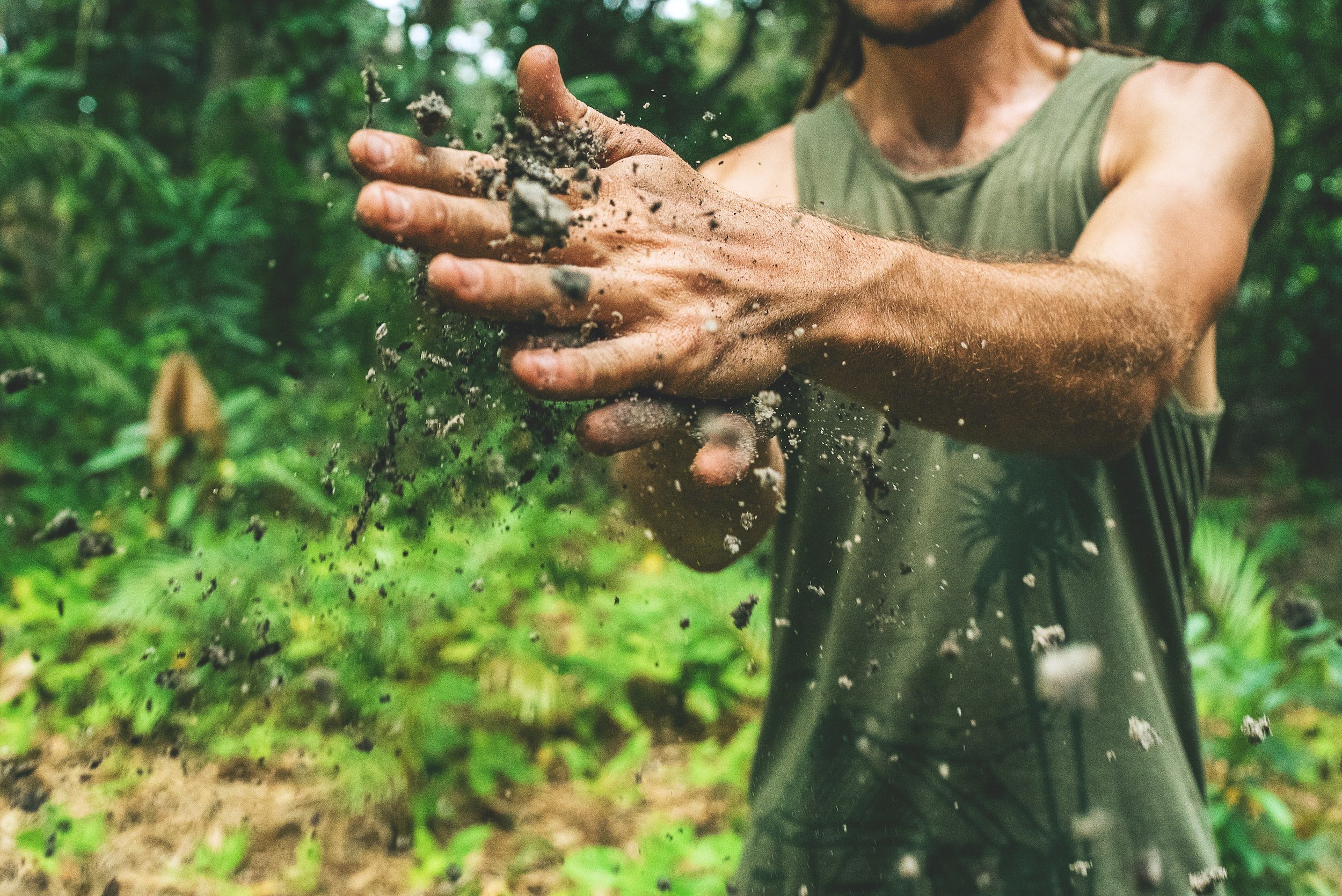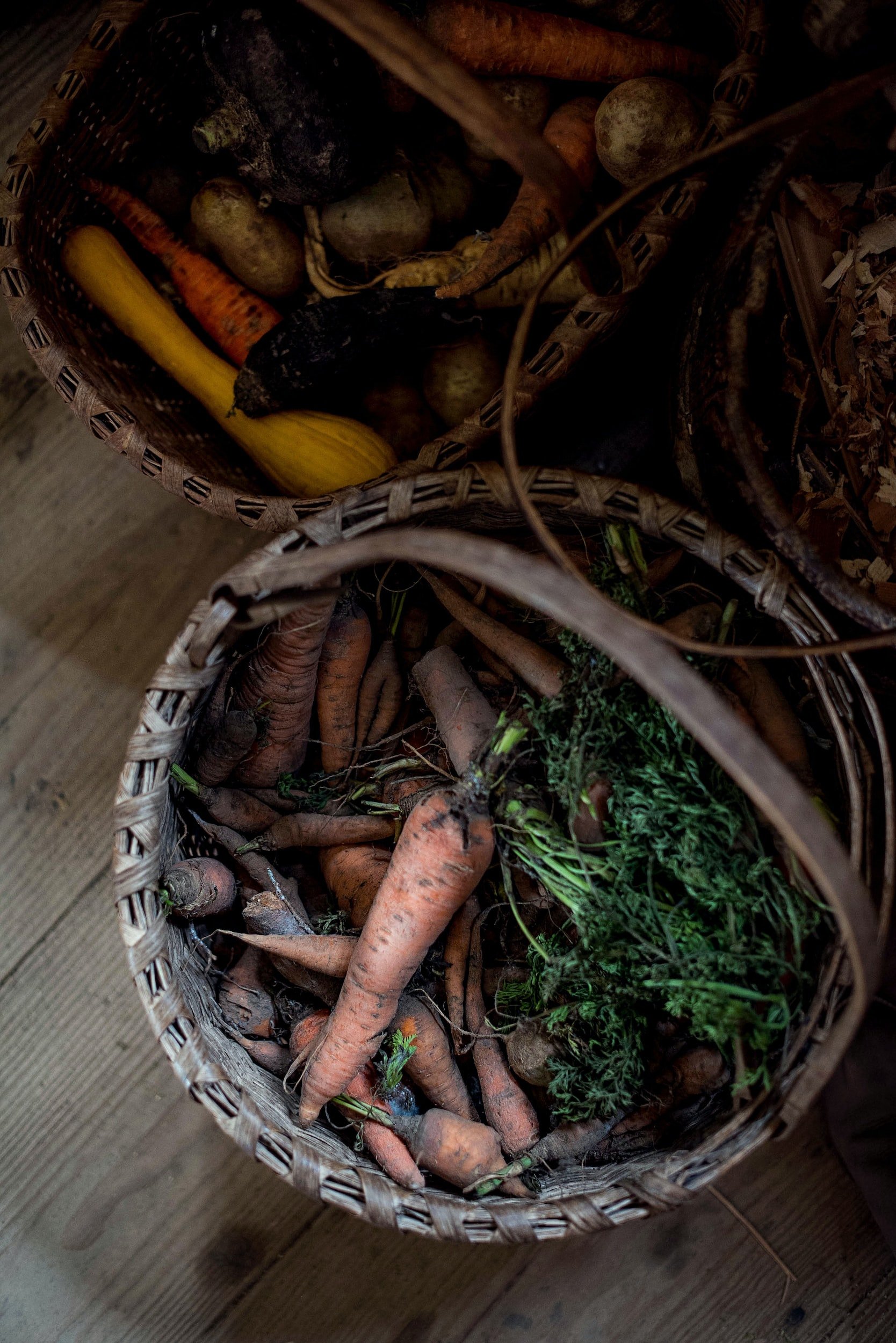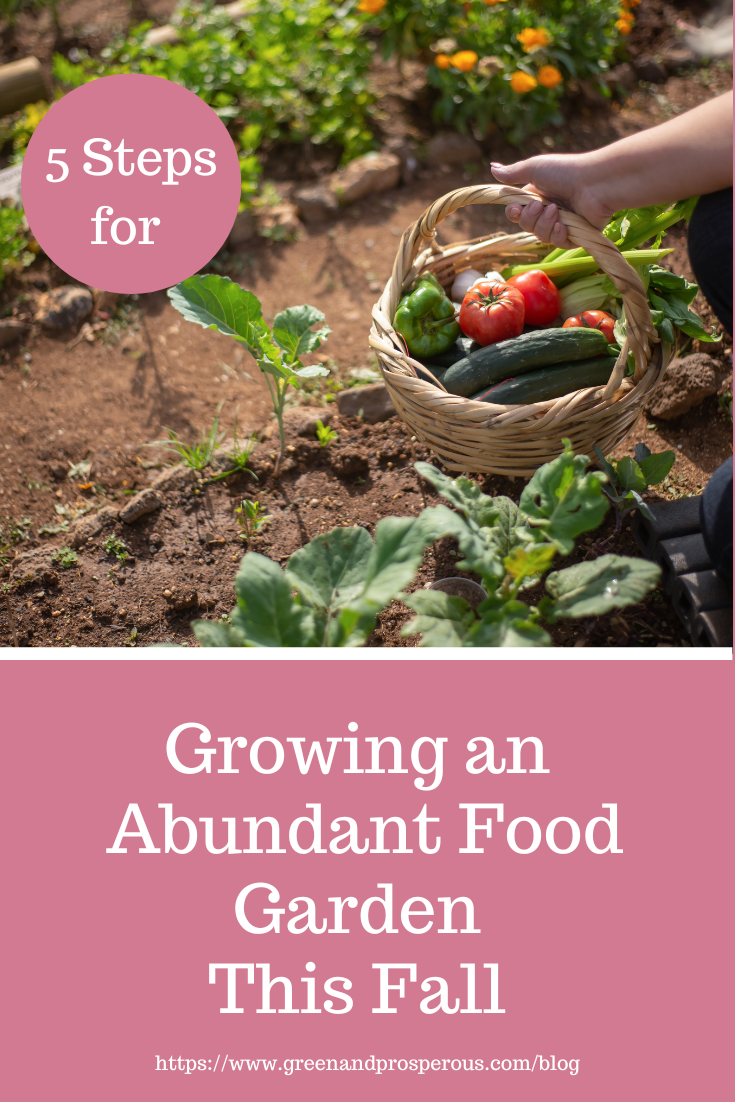5 steps to a productive food garden this fall
/While many people only grow food gardens during the spring and summer months, there’s no reason that your gardening season has to end now, unless you are in a part of the world where the weather turns bitterly cold in the fall, and you have no season extending tools (or options for indoor growing). As the hot summer months give way to cooler temperatures, you can begin planting new varieties of food crops, or continue successive planting of summer-to-fall vegetables and herbs.
In many ways fall gardening is easier, with cooler temperatures, reduced watering requirements, and hopefully fewer issues with herbivore pests in your garden. At the same time, fall planting and harvesting can present its own set of challenges, some of which are discussed below. If you’re planning to continue your food garden into the fall months, or even if you’re doing so this fall for the first time, you’ll want to ensure that you get off to a good start. Here are 5 things you can do now to make your fall food garden thrive so you can reap a productive harvest over the next few months.
Amend and mulch the soil
Fall is a great time of year to put fallen leaves to good use. While many people bag these leaves for recycling, you can also use them in your garden beds to mulch or to improve the quality of your soil. For mulch, shred or manually break down the leaves and spread evenly over the soil to retain water and protect from the heat or cold. For compost, alternate the leaves with kitchen scraps or manure to improve the quality of your garden before planting or transplanting.
Plant species that will attract bees to your garden
Cooler temperatures make it more difficult for bees to do their work and survive the winter. Plant pollen is the primary way that bees get their protein, and the nectar they get from plants (which they convert to honey) provides them with carbohydrates, where they get their energy to carry out their daily activities. To attract bees to your garden (after all, they’ll be helping your plants with pollination), plant the kinds of vegetation that will bloom during the cooler months. Flowers that will attract bees to your garden from fall and into the winter months include rosemary, primrose, heather, calendula, crocus, and cornflower.
Choose your plants wisely
Although you can plant or place your cool-weather crops inside of a greenhouse, cold frame, hot box, polytunnel, row cover, pop-up-plant protector, or heavy-duty gardening plastic in order to keep them growing through the fall and winter months, you can also grow many varieties of cold-hardy vegetables and herbs without these season-extending tools. These days, it’s easy to find cold-hardy varieties of fall-to-winter seeds or seedlings at your local nursery, through a seed catalog, and even on Etsy.com.
Some plants can tolerate temperatures as low as 32 degrees Fahrenheit, especially when you cover them with a heavy layer of mulch. They include vegetables like spinach, leeks, rhubarb, rutabaga, turnips, garlic, kohlrabi, kale, broccoli, cabbage, cauliflower, Brussels sprouts, arugula, radish, carrots, lettuce, Swiss chard, celery, and herbs like parsley, chives, oregano, sage, thyme, and mint. Lavender can also survive cold weather as long as it is heavily mulched and not overwatered.
Don’t overwater (or underwater)
With temperatures cooling down, your outdoor plants won’t need to be watered as frequently as they did during the hot summer months. This is especially true if your area receives a lot of rainfall in the autumn season. While this means your workload will be lighter, it also means that your plants will be more susceptible to overwatering. With cooler temperatures, it will be harder for your plants to recover from overwatering, especially if they are in containers.
How can you tell when your plants need watering? One simple method is to make a slit in the ground (or in the potted soil) with a trowel. If you’re watering in-ground plants, the slit should be about 12 inches, which is the depth of most root systems. You may need to create a shorter slit if you are growing a shallow-rooting plant; this root depth chart by Garden Betty can help you determine how deep your plant’s roots go. If the soil at the bottom of the slit feels dry, you need to water.
Generally, watering frequently for a short amount of time doesn’t help your plants grow healthy. Strong root systems are developed when the roots of your plants have to go deep into the soil to find water. Watering deeply and less frequently forces plant roots to do this. It also helps them survive periods of drought and prepares them for survival well into the cold months. When the temperatures in the air and soil are falling below 40 degrees Fahrenheit on a consistent basis, stop watering your plants, since the ground won’t be able to absorb water after the top few inches of soil have frozen.
Fertilize in moderation
Generally, plants need fertilizer to develop healthy stems and roots, but fertilizing too frequently can result in plants with lots of stems (or large stems) but few fruits. In summer, fertilizing every 2 to3 weeks with an organic fertilizer or compost tea is a good rule of thumb. Some growers stop fertilizing altogether at the end of summer in order to allow their flowering vegetables (meaning plants that grow vegetables from flowers) to focus on forming produce. Container plants, however, deplete their nutrients faster than in-ground plants, so will need to be fertilized longer into the growing season.
You can mix a granular fertilizer into the soil when planting or work it into the top layer of soil for plants that have already been established in their beds or containers. Although you can safely use an all-purpose fertilizer for most vegetables and herbs, each kind of plant will have its own particular nutrient needs at different stages of the growing cycle. A simple soil test (which you can purchase at a nursery, home improvement store, or online) can help you decide if your garden needs fertilizer, and what, if any, nutrients, it is lacking.
Like this? Please pin!
The end of summer doesn’t have to mean the end of your vegetable and herb growing season. These days, more people have taken up food gardening, and many among them find that growing their own food into the cool and even cold-season months is a rewarding activity. There are many vegetables and herbs that thrive in cooler weather. Taking these steps to ensure your garden grows healthy and in abundance can extend the joy of gardening for you this fall season!












































In early June 2025, the CDC announced a major recall involving more than 20 million eggs linked to a multi-state salmonella outbreak. At least 79 people across 7 states have fallen ill, and over 20 have been hospitalized. The eggs in question were sold under multiple brand names and traced to specific facilities with plant codes P-6562 and CA-5330, with best-by dates ranging from March 4 to June 19, 2025.